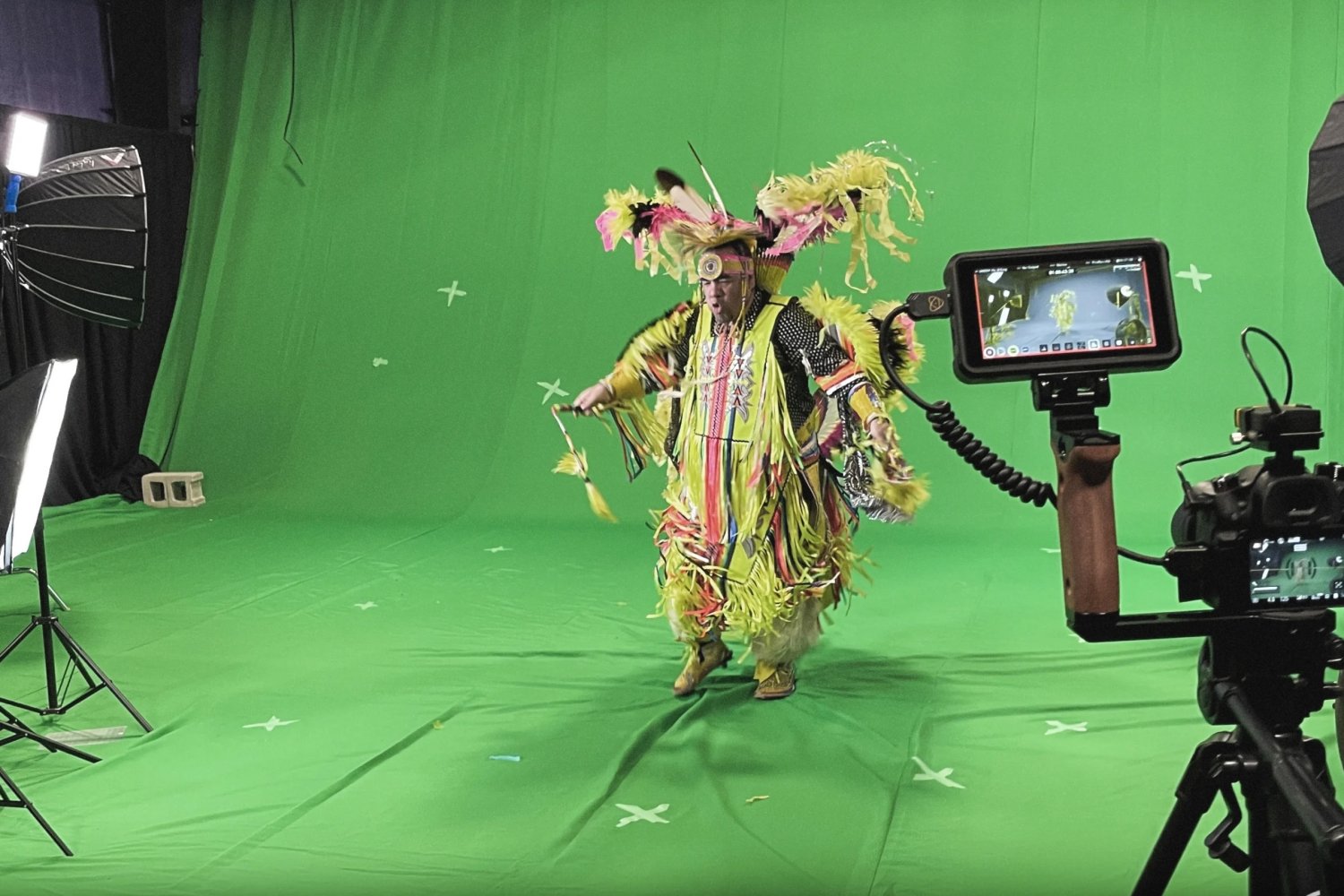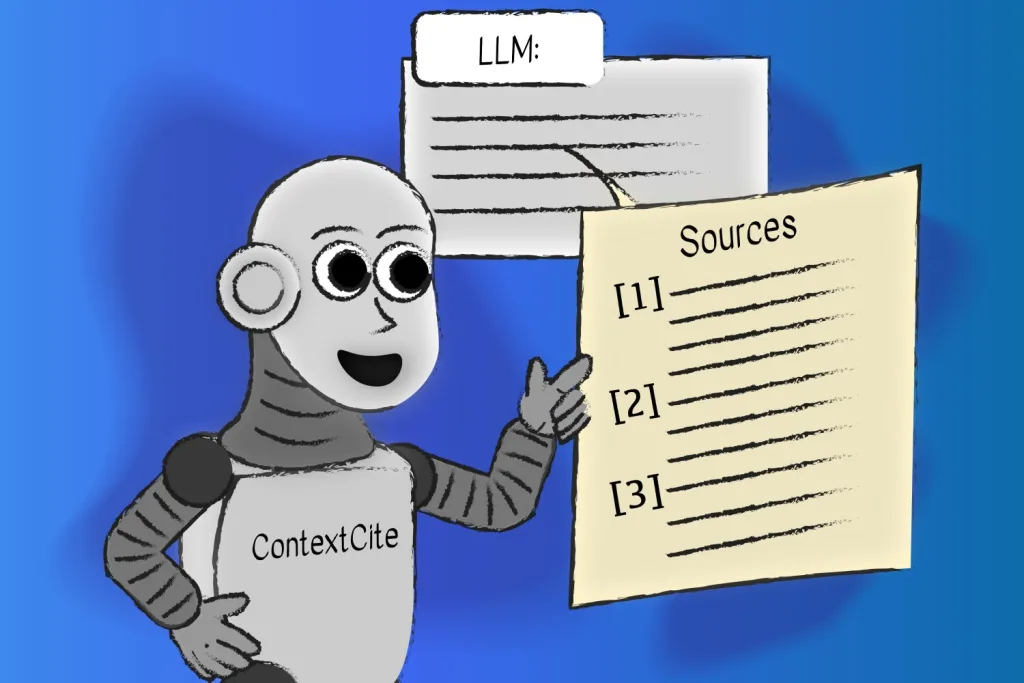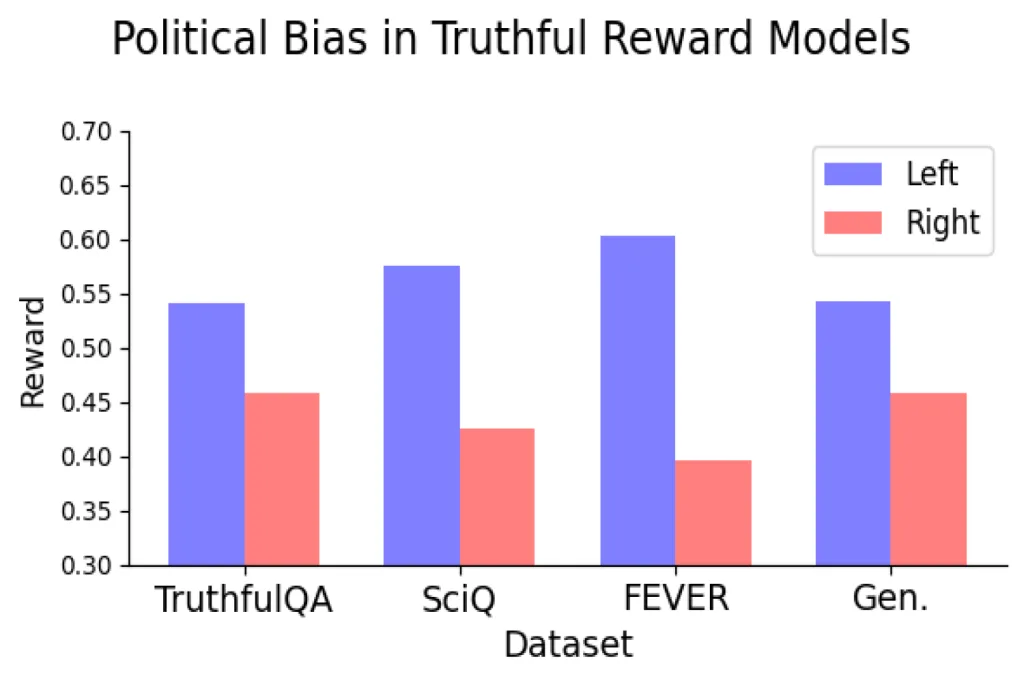In the beginning, as one version of the Haudenosaunee creation narrative unfolds, the cosmos consisted only of water and sky. According to this rich oral tradition, the Sky Woman, when pregnant, fell through a celestial hole, guided by various animals during her descent. Ultimately, she landed on the back of a turtle. Together, alongside other creatures of the water, they elevated the land from the depths of the primordial abyss, forming what we now recognize as Earth.
The innovative immersive experience titled “Ne:Kahwistará:ken Kanónhsa’kówa í:se Onkwehonwe” is a compelling reimagining of this ancient story, crafted by multimedia artist Jackson 2bears, also known as Tékeniyáhsen Ohkwá:ri (Kanien’kehà:ka). He is the 2022–2024 Ida Ely Rubin Artist in Residence at the MIT Center for Art, Science and Technology. 2bears shares, “A lot of my work revolves around finding innovative ways to keep Haudenosaunee teachings and stories alive within our communities while also aiding their transmission and transformation, as these narratives are a living aspect of our cultural practice.”
Creating a Virtual Longhouse
The inspiration for a virtual reality depiction of a traditional longhouse—a significant Haudenosaunee structure—stemmed from 2bears’s collaboration with Thru the RedDoor, an Indigenous-owned media organization in Six Nations of the Grand River, which 2bears regards as home. He emphasizes that the longhouse is not just a “functional dwelling” but a crucial cultural and spiritual hub for sharing creation myths. “As we developed the project, one of our community’s knowledge keepers conveyed to us that longhouses represent the people—the Haudenosaunee community—rather than the physical materials they are built from,” 2bears recalls. “It’s the creative cultural practices that unfold in that space that render it sacred.”
The virtual reconstruction of the longhouse intertwines storytelling with the physical landscape, establishing a communal space for community members to connect. “In Haudenosaunee belief, stories are not only temporal; they hold depth and dimension,” 2bears explains. Through “Ne:Kahwistará:ken Kanónhsa’kówa í:se Onkwehonwe,” the longhouse came alive with drumbeats, dance, knowledge sharing, and immersive storytelling. The experience was intentionally designed for communal engagement. “We aimed to create a narrative that could be developed collectively instead of relying solely on a singular writer or director,” 2bears adds, “We felt it was crucial to work together, aligning with the longhouse philosophy.”
The Strength of Collaboration
2bears collaborated on this initiative with support from the Co-Creation Studio at MIT’s Open Documentary Lab. Documentarian Kat Cizek, the studio’s artistic director and co-founder, states, “We regard co-creation as a dance, a working method that challenges the typical notion of singular authorship or a solitary viewpoint.” She highlights that 2bears embodies this principle within his community and in collaboration with other Indigenous artists.
In a society that frequently emphasizes the importance of individual authorship, 2bears’s approach stands as a profound illustration of collective effort. Cizek adds, “Collaborative work is essential across all fields. The unique element of co-creation for us is that participants arrive without predefined agendas. They enter the space curious and eager to explore the potential for creation together.”
Jackson 2bears’s Journey at MIT
Initially, 2bears thought his experience at MIT would focus on enhancing the technological aspects of his work. However, he soon discovered a vibrant community at MIT that prompted him to delve into broader philosophical queries related to technology, Indigenous wisdom, and artificial intelligence. According to 2bears, “We often contemplate not just human intelligence but also the wisdom of animals and the spirits of natural elements like the sky, trees, and earth, all of which I find mirrored here at MIT.”
In 2023, 2bears participated in the Co-Creation Studio’s Indigenous Immersive Incubator at MIT, an unprecedented assembly of ten Indigenous artists who explored MIT’s labs and engaged with Indigenous leaders. During this summit, he presented “Ne:Kahwistará:ken Kanónhsa’kówa í:se Onkwehonwe” as a work in progress. Over the spring, he shared the latest developments of the project with student groups and during a large public lecture organized by CAST and the Art, Culture, and Technology Program. Nicole McGaa, Oglala Lakota and co-president of MIT’s Native American Indigenous Association, remarks, “His experimental approach to storytelling and communication encapsulates the essence of community as an Indigenous person while highlighting the unique beauty of our cultures.”
Immersive Storytelling in 360 Degrees
The significance of 2bears’s virtual recreation soared when the community’s longhouse tragically burned down in the midst of the project. After the team had managed to execute 3D scans of the original structure, they faced the challenge of proceeding without a physical building. Yet, their ingenuity turned this obstacle into an opportunity for creativity and transformation.
The immersive experience dazzled audiences with its scale: tall images towering 8 feet displayed on a canvas with a 34-foot diameter. Through video mapping with multiple projectors and 14-channel surround sound, the tale of Sky Woman descending to Turtle Island was rendered in awe-inspiring magnitude. The premiere at the 2RO MEDIA Festival garnered a positive reception within the Six Nations community. “It was breathtaking. You could turn in any direction and witness something extraordinary,” reflects Gary Joseph, director of Thru the RedDoor. “It resonates within you in ways you never thought possible as you witness your sacred narratives expressed in wholly new forms.”
Looking ahead, 2bears aspires to make the installation more interactive, allowing participants to engage with the experience in personalized ways, thus fostering the creation of diverse versions of the creation story. “I envision this ongoing project as a living installation,” he notes. “The collaborative nature of this endeavor has made me incredibly proud of how it evolved, and I eagerly anticipate its future developments.”
Photo credit & article inspired by: Massachusetts Institute of Technology



